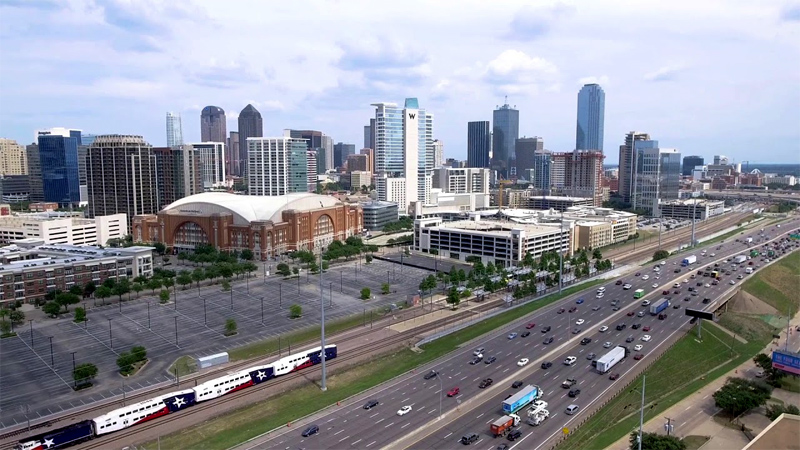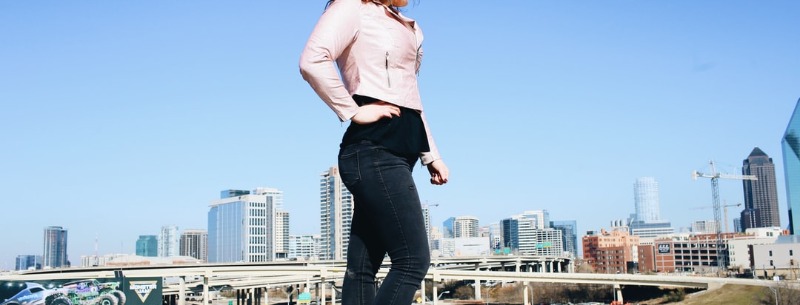Dallas is the third-largest city in Texas and is part of the metropolitan area which includes Dallas, Fort Worth, and Arlington. The land around Dallas is mostly flat and the climate is pretty mild although it does have a few cold days in the winter. The Trinity River is the main waterway of Dallas. The Trinity River never grew as a tourist attraction for the Dallas area but the city is working riverfront enhancement projects that will hopefully grow the tourist appeal for the city. The Dallas/Fort Worth Airport is a hub for much of the international traffic coming into and leaving the United States.
Downtown Dallas
Downtown Dallas is subdivided into 7 districts; West End Historic District, Arts District, Main Street District, Farmers Market District, the City Center business district, the Convention Center District, and the Reunion District.
The West End Historic District of downtown Dallas contains the following attractions: the Conspiracy Museum, the JFK Memorial, The Old Red Museum, the Dallas World Aquarium, the Dallas Holocaust Museum/Center for Education & Tolerance, the Sixth Floor Museum, and the location where Lee Harvey Oswald shot President John F. Kennedy.
Much of the art community of Dallas can be found in the Art District of downtown Dallas. The Art District contains the following attractions: the AT&T; Performing Arts Center, the Annette Strauss Artist Square, the City Performance Hall, Dee, and Charles Wyly Theatre, Margot and Bill Winspear Opera House, Booker T. Washington High School for the Performing and Visual Arts, the Trammell & Margaret Crow Collection of Asian Art, the Dallas Museum of Art, the Morton H. Meyerson Symphony Center, and the Nasher Sculpture Center.

The Main Street District of downtown Dallas is the hub of much of the business and entertainment of Dallas. Much of the appeal of the Main Street District of downtown Dallas is the Main Street Garden Park and Pegasus Plaza. Pegasus Plaza is a popular location for festivals and concerts.
The Farmers Market District of downtown Dallas is a popular location for buying fresh grown foods from local farmers. Saturday is a great day to go to the Farmers Market.
The City Center business district of downtown Dallas is mostly made up of huge sky-scrapers and business buildings. Very little of this district is appealing to tourists but it is responsible for much of the beautiful skyline of Dallas.
The Conventions Center District of downtown Dallas contains the following attractions: the Dallas Convention Center, Pioneer Plaza, and Pioneer Park Cemetery. The Dallas Convention Center is a 2 million square feet building, half of which contains exhibits. The other half contains an arena, a theatre, and ballrooms. Pioneer Plaza is one of the most visited attractions in Dallas. This plaza contains a huge sculpture of 70 bronze steers and 3 riders. This sculpture was built to the cattle drives that once took place on the Shawnee Trail in the 19th century. Right next to the Pioneer Plaza is the Pioneer Park Cemetery. This cemetery contains a Confederate War Memorial.
The Reunion District of downtown Dallas contains the Reunion Tower. The Reunion Tower is a 560-foot observation tower. The Reunion Tower is best known for its fine dining, special events, and of course the best view Dallas has to offer.
Uptown Dallas
Uptown Dallas is made up of State Thomas, West Village, and Knox Park. State Thomas is most known for its landmarks and historic buildings. West Village is most visited for its retail and entertainment districts. Knox Park is popular for its great restraints and nightlife.
Victory Park contains the House of Blues, a live music venue, the Hard Rock Cafe, and the Perot Museum of Nature & Science.

Oak Lawn is most known for its beautiful architecture. Oak Lawn runs adjacent to Turtle Creek, a branch of the Trinity River.
Sports In Dallas
Dallas is also known for being a big sports city. Dallas is home to the Dallas Cowboys (Americas Team). The city of Dallas hosts teams from nearly every professional sports league including the MLB, NBA, NHL, AFL, and MLS. Dallas also hosts the annual Red River Shootout between the Texas Longhorns and Oklahoma Sooners in the Cotton Bowl.
Attractions in Dallas
Dallas is very underrated as a tourist city. Dallas has the largest zoo in Texas, a Six Flags Amusement Park ( Six Flags Over Texas), several recreational lakes (White Rock Lake and Bachman Lake), Cedar Hill State Park, and much more. Dallas has over 400 parks with over 60 miles of hiking and biking trails. The most popular of these parks is the 260-acre Fair Park. Fair Park is home to the annual Texas State Fair.

History of Dallas
The city of Dallas was founded along the Trinity River at a location called “The White Rock Crossing”. This area was chosen because it was easier for horses and wagons to get across the river in the days before ferries. Before this time, Dallas was under Spanish and Mexican rule. In 1819, a treaty called the Adams-Onis made the Red River the northern boundary of New Spain. By doing this, the area was under Spanish rule until 1821.

At this time, Mexico declared it’s Independence from Spain and made Dallas part of the Mexican State of Coahuila y. Tejas. Later in 1835, the Texas War of Independence started due to conflicts between the Mexican government and the American settlers in the area. Antonio Lopez de Santa Anna formed the anti-federalist constitution of 1835, and the new laws quickly became unpopular with the Mexican and American settlers. This constitution did away with the “Free and Sovereign States” and centralized the power in Mexico City. In 1836 the Republic of Texas broke away after the battle of San Jacinto. In 1845 the Republic of Texas joined the Union of the United States of America. In 1846 Dallas County was established. Since that day Dallas, Texas has grown into a densely populated metropolitan area.
